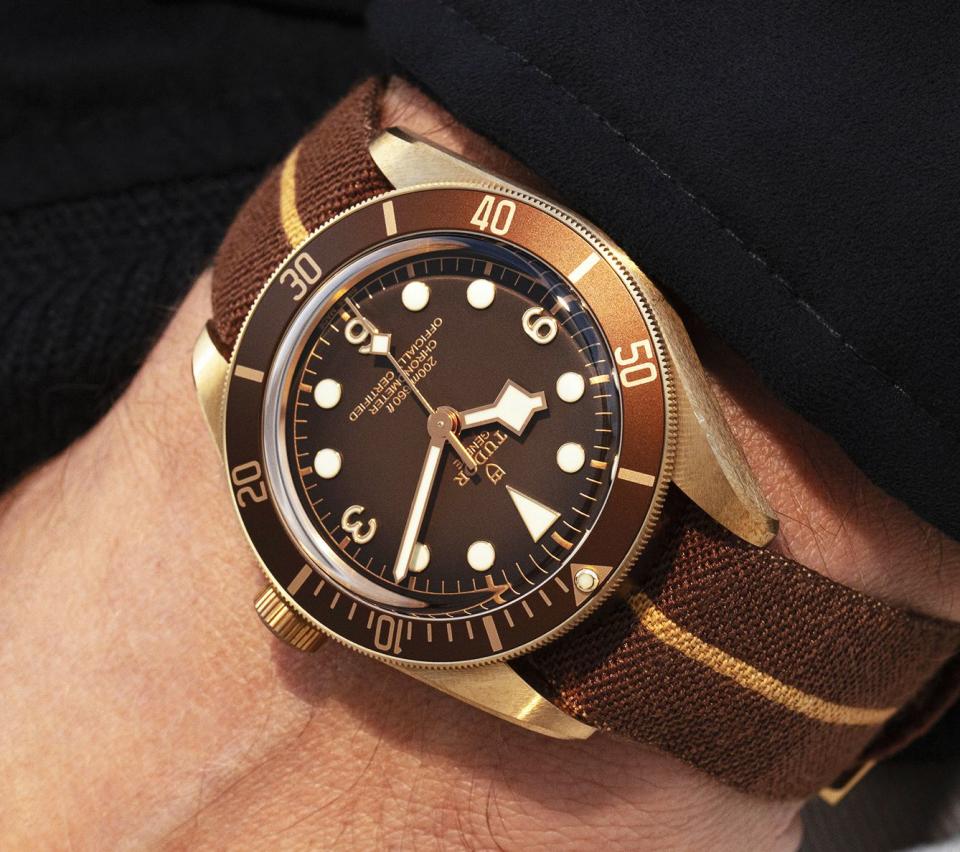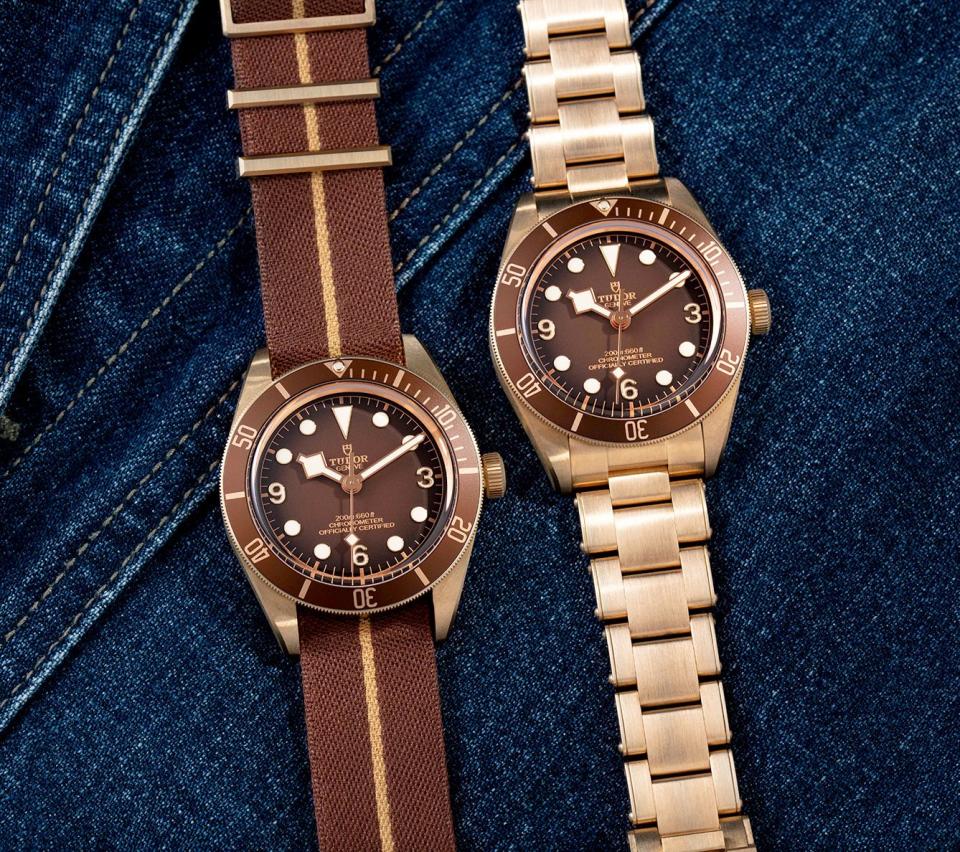The Tudor Black Bay Fifty-Eight Bronze Will Become More Unique the More You Wear It

One of the more obscure off-shoots of the rise of bronze as a popular material for tool watches is the phenomenon of extreme patination. If you remember your high-school French and are now imagining this is a cross of ice-skating and parkour, it is not. What it is, however, is a frankly weird subset of the trend to vintage looking watches, where owners go all out to age their bronze watches more rapidly than the atmosphere and daily wear could naturally achieve. Posting their pictures on watch forums, they compete to out-ruin their watches, to the amusement—but more often bemusement—of other collectors.
Most watches are made precisely not to age, with stainless steel or precious metals. Yet bronze has its own modern appeal in watch collecting precisely because it does age—just not like some other metals. Instead of corroding and rusting up like iron, the alloy merely darkens and dulls. The fittings on oceangoing vessels have been made in bronze for hundreds of years because for this very reason, and even since the advent of stainless steel, many modern ships are still made in bronze. A bronze watch, similarly, darkens or dulls as it oxidizes, but doesn’t rust. And the degree to which it darkens depends entirely on where it is worn. Which means, as a wearer, you get a watch that is increasingly unique to you.
This month Tudor unveiled an all-bronze version of its popular Black Bay Fifty-Eight just for its own boutiques, with a bronze bracelet (the first time the brand made a bracelet in bronze) and featuring a new quick adjustment clasp. The Fifty-Eight is named for a banner year in Tudor’s history, the year it released its first Big Crown diver, the 7924, its first watch capable of withstanding 200m of water pressure. One of the reasons for the Fifty-Eight’s success is its size. At just 39mm in diameter it is the same size as those original divers. It would have been noticeably large in 1958 but in today’s supersized watch market looks pleasingly small.

The Fifty-Eight, for value hounds, is very well priced at under $5k, given that this is also a COSC certified chronometer, which means it has been subjected to higher levels of testing by an independent Swiss government lab.
Aesthetically the watch does not disappoint. To emphasise the all-over bronze vibe, the dial is a gradated matte brown, hinting at what is known in vintage-obsessed collectors’ circles as a tropical patina, while the screw-in case back is actually steel treated with a pvd treatment to mimic the bronze of the case and bracelet. A woven Perlon strap is supplied in a suitable shade of brown for days when you need a break from all that bronze.

In the manufacture, Tudor technicians are obliged to wear gloves at all times to prevent human contact accelerating the patination before the watch has even got out the door of the factory. And if you’re already looking forward to the ageing process, hold up. Tudor’s version of bronze is an alloy of copper and tin (like all bronze), but Tudor’s has the addition of Aluminum (they won’t say how much) to control the degree of patination and the rate at which it forms. Bad luck, extreme patinators.
You Might Also Like

 Yahoo Finance
Yahoo Finance 